With a number of players involved, the battle against the Islamic State requires pragmatic policies.
The Islamic State (IS) shot to fame in summer 2014, when it captured Iraq’s second city of Mosul and made serious advances toward the capital, Baghdad, capturing vast swathes of territory. Fears spread that the Iraqi government would fall after sections of the US-trained Iraqi Security Forces collapsed.
Months later, an anti-IS coalition was formed. This includes the Iraqi Security Forces, Kurdish Peshmerga fighters, Shiite militias, a US-led coalition for air support, Iranian advisors and soldiers, and Sunni tribesmen. At first glance, this appears as a rather unusual alliance when viewed through a lens of Iraq’s recent history. However, while each player has their own incentive, as of now, they seem bound by their determination to defeat the jihadist group.
The ongoing battle over Saddam Hussein’s hometown of Tikrit shows how the situation has evolved over the last ten months. IS has been pushed back in various areas across Iraq, but it has managed to hold onto large territories, including Mosul.
Fair Observer talks to intelligence analyst Landon Shroder, who has spent the last seven years in Iraq and was one of few Westerners in Baghdad during the IS advance in 2014.
Manuel Langendorf: You were in Baghdad when the main part of the Islamic State offensive started in June 2014. How did you experience it, and what was the sense you and the people around got?
Landon Shroder: To give the full picture of the Islamic State’s ascendency, you can’t really start in June, but toward the end of 2013/start of 2014. Then-Prime Minister Nouri al-Maliki instituted a disastrous series of policies, which saw the arrest of a senior Sunni politician, as well as the removal of a political protest camp in Ramadi. Both were conducted under the pretense of links to terrorism, which — given the history of political links to terrorism in Iraq — was quite bold, even for Maliki.
What happened next, in simplistic terms, was that Anbar Province was basically overrun by armed opposition groups, which highlights just how fragile the political and security situation had become up until this point. By making Ramadi the flashpoint for security operations, Maliki, in effect, extended the frontline of the conflict from the Syrian border right into the Ramadi-Fallujah corridor — only 40 miles or so from Baghdad.
This is where the contemporary story of the Islamic State in Iraq really begins. It is important to remember that the Islamic State has existed in various forms since the US occupation in 2003.
Now, fast forward to June 2014. What myself and my other colleagues in Baghdad understood, after the events in Mosul, was that Anbar Province had probably provided the space not just for ISIS [Islamic State], but for all the different anti-government groups to plan and organize the ground game, which preceded the events in Mosul and led to the current insurrection.
There was a charged atmosphere on the day Mosul fell. Most of us knew this was an extraordinary event that was going to irreparably change the landscape of Iraq. The problem working with intelligence, as any analyst will tell you, is that no one typically acts on the information, until the information has already overtaken your ability to respond to it. Those of us in Baghdad could see what was happening quite clearly; the same, unfortunately, could not be said for those who were elsewhere.
After we wrapped our heads around the fall of Mosul — this was Iraq’s second largest city; its fall was a tremendous event — our concerns immediately turned to the disintegration of the Iraqi Security Forces.
We soon started to receive all kinds of photos, information and social media downloads that soldiers were just abandoning their posts, leaving their uniforms in the streets, fighters were riding around on US Humvees, flying the black flag of ISIS over military installations. The situation was grim — the first 24 hours after the fall of Mosul were quite intense.
Langendorf: There was a lot of talk about why the military collapsed in parts of Iraq in such a short amount of time. What were some of the key factors in this regard? Does this tell us anything about the policies within the military and toward the military over the years before? For example, how Nouri al-Maliki saw the army and security forces.
Shroder: Yes. After the initial flash, there tended to be quite a divergence of opinion. Most of us already knew just how capable of a fighting force ISIS was, but I don’t think anyone realized just how capable. This was an insurgency that had been hardened by almost ten years of war fighting in Iraq and almost three in Syria. We were all caught off guard by how they were able to model themselves as something of a conventional combat force, as opposed to just a disparate network of terrorist cells. That really surprised us.
Nouri al-Maliki was a very complex man, who believed in the Shiite enfranchisement of both the government and security forces. This was especially true for the Iraqi Security Forces. Going back to 2011-2012, it was clear that the government was partitioning the military in a way that ensured loyalty to him as the prime minister, not necessarily loyalty to the state. He was designing an army that was beneficial to him and his political supporters.
Now, if you are a young soldier up in Mosul, which is a Sunni city, but maybe you are from the southern Shiite province of Basra and you have a fearsome enemy like ISIS, whose reputation for cruelty and brutality is both strategic and psychological, and you have just seen your officers flee the scene, what would you do? There is not really a big incentive to stay and fight and get slaughtered — hence the disintegration.
After the initial flash, we soon extrapolated that out of the 200 fighting units of the Iraqi Security Forces, only about 80 could actually be accounted for — and this was only after the first three days. The rest had either been deserted, captured or scattered throughout the Sunni provinces.
Langendorf: What role do Shiite militias currently play? Do they pose a threat to Iraq?
Shroder: The Shiite militias are going to be the big story in Iraq over the next 6-12 months. At this point, they are playing an indispensable security role in the fight against the Islamic State. When talking about the Iraqi Security Forces, we are also talking about the Shiite militias — the two are becoming hard to distinguish. The new government of Haider al-Abadi seems to be trying to reign them in somewhat, but that will be an extremely challenging process due to their political and security influence.
Overall, the fight against the Islamic State is fought by the Iraqi Security Forces, Kurdish Peshmerga and the Shiite militias — many of whom are Iranian proxies. All three of these, however, in some instances, have been coordinating together, and in certain instances the US has supported offensives that have been a combination of all three.
This constitutes a huge shift in policy and strategy — as only four to five years ago, the militias and the US were mortal enemies — in the classic sense.
What has always been apparent to us in Baghdad is that the militias do not necessarily operate under the control of the central government. They can operate according to their own planning, strategies and tactics, and this has been recognized as a huge problem. We could even say that this is a short-term tactical gain by the Iraqi government, at the expense of long-term strategy. This issue with the militias is very deep and complex, and not only speaks to the lack of competence within the Iraqi Security Forces, but also indicates the involvement of Iran and their projection of power inside of Iraq. Everyone understands that if the Islamic State gets pushed out of Iraq — and that is a huge if — that the militias will want something for their participation: either political or military concessions, or even both.
In fairness, it is hard to make an argument that they shouldn’t, given their battlefield losses and sacrifice. They were called on to defend the state by the government and the grand ayatollah of Iraq, and they did. Unfortunately, this will be where most attempts at reconciliation break down, as their involvement only stresses the sectarian dynamism of the conflict and compels the conditions that allowed the Islamic State to flourish.
Langendorf: On the point of coordination, there are varying reports over what extent these militias coordinate with the Iraqi army or Kurdish forces. Is there a general level of coordination?
Shroder: There is a definite level of coordination, the situation on the ground demands it. At this point, I think there is very little question that the militias coordinate with each other, with the Iraqi Security Forces and even the Peshmerga. There have now been one to many security operations where all these groups have come together in advance of an assault against the Islamic State.
Nonetheless, it appears to me, and to most of my colleagues, that only the Iranians really have enough influence to bring all of these groups together under one de facto coordination structure. This is where the West and Western media tend to lose interest, because it exists outside of the narrative that both the US and Arab allies — especially those in the Gulf — and Israel are desperate to avoid.
One of the unspoken stories that is rarely given any coverage in the West was that without the Iranian intervention in the days immediately following the Islamic State advance, the government of Iraq might not have survived. Within 24-48 hours, their special forces, known as Quds Force, were on the ground taking control of the situation and organizing the counter-offensive and defense of Baghdad. People don’t realize that the US didn’t get involved in the fight against the Islamic State until August 2014, almost two months after hostilities started.
So there was a whole two months in which the battle space had been shaped by the Iranian intervention, and I think the situation was critical enough that all major security entities understood that they needed to come together. And if not, I think the Iranians made them see the need. Because of this, even now, I don’t really think the US has any real leverage to maneuver around this reality or find some kind of advantage that might break down this cooperation — nor should they.
Langendorf: For the Iranians, given the presence of certain groups in the anti-Islamic State coalition, this is not a case of dealing with new faces due to their longstanding ties in many cases.
Shroder: Right, and I would say that most, if not all, of the main Shiite militias have links back to the Iranians. The main militias all have great names like Asaib Ahl al-Haq, also known as League of the Righteous, Peace Brigades, Kataib Hezbollah or the Badr Corps; however, these groups have evolved somewhat since the period of insurgency against the US.
We have to be aware that the hyper-violence during the darkest days of the occupation was very intense, but nowadays they seem to have a bit more self-awareness and political understanding of the situation they find themselves in. This is not to say they haven’t committed crimes or conducted many extra-judicial killings — because they have — but if they are to take an official place in the political/military landscape of the post-Islamic State Iraq, then they cannot be seen to be going on prolonged kill-crazy rampages. This has restrained them somewhat, but only just.
In June, after the advance by ISIS, one of our very real concerns, especially watching the events unfold in Baghdad, was that sectarian violence was going to peak between Sunni and Shiite and break down law and order throughout the capital. While sectarian violence was reported in the days following the fall of Mosul, which was primarily connected to the activation of the militias, it was not as widespread as we feared, certainly not to the same extent as was being conducted during 2005-2009. Again, this partly goes back to the fact that the militias understand that they will have some role to play in the politics of Iraq once the situation with the Islamic State can stabilize — regardless of what form this might take. Additionally, the Iranians, who project their power through these militias and proxy groups, know that they cannot maintain their influence legitimately in the long-term, if groups affiliated with them become seriously unhinged and return to the kinds of full sectarian conflict that underscored the previous conflict.
Langendorf: You mentioned the Iranian involvement, which as you said is quite key. To what extent could this lead to a wider rapprochement with the US, given that both countries are on the same side in the fight against IS, the common enemy?
Shroder: This really is the million dollar question, isn’t it? I have always told my clients that the primary indicator for any kind of reconciliation is entirely linked to the domestic politics within each country. On a strategic level, on an executive level and probably within both militaries, there is likely a general acceptance that this kind of rapprochement is a good thing, especially as our interests converge in fighting the Islamic State.
Another key point to watch will be the P5+1 nuclear talks. Cooperation over the Islamic State has, in all likelihood, alleviated some of the tensions between the US and Iran, and provided space for negotiations to continue with a bit more ease. I do not think these two things can be extrapolated from each other — fighting the Islamic State and the nuclear negotiations, both are uniquely independent. I know this has triggered a visceral response from conservative politicians in the US and even some liberals, but that is about politics, not strategic pragmatism or what is best for the region. This is also worrying some of our allies in the Gulf countries, as well as Israel, but our objective must be defeating the Islamic State, not executing the foreign policy of other countries.
And all of this goes back to being pragmatic about the situation in Iraq, since defeating the Islamic State without Iran will be very difficult due to their influence with both the Iraqi army, Kurdish Peshmerga and Shiite militias. As we talked about earlier, only the Iranians have the ability to pull these disparate groups together. I don’t think the Western coalition has enough cultural depth, even after the many years of war in Iraq, to develop the mechanisms for this kind of cooperation. The trust is still lacking on all sides.
Langendorf: There are currently heavy battles over Tikrit, and IS has been pushed back in other areas of Iraq. Has the group’s expansion reached its limit?
Shroder: For all intents and purposes, the Islamic State reached the zenith of their territorial expansion months ago. There have been recent offensives or spoiling attacks in places like Baghdadi in Anbar, or up in Kirkuk and Gwer, but for them to continue to recruit, they have to be seen fighting or expanding. The Islamic State, regardless of what Western media like to report, is not a monolithic fighting force, they are not omnipresent and there are very real limits as to what they can accomplish.
If they go into a defensive posture and attempt to just maintain the borders of their territory, then they will actually have to govern, provide salaries for their municipal works, establish trade and be an effective state, which will inevitably lead to their demise.
We know this, they know this and this informs part of their operational strategy.
Langendorf: There was a recent briefing in which it was said that a force of about 20,000 men would be involved in retaking Mosul in April or May. The Iraqi prime minister, Haider al-Abadi, also gave an interview where he said that the offensive would happen this year without clarifying when exactly. What is your view on this?
Shroder: There are a few things to unpack with this, and I think the real meaning behind the announcement has been lost to score cheap political points on all sides. Nonetheless, I also had the initial reaction of “why would you announce that?”
But then I started looking deeper into our daily intelligence reports, and what became apparent was that there has been a high rate of attrition amongst Islamic States fighters throughout the center of Iraq. As a result, reports of public executions for desertions are becoming more frequent. From a tactical perspective, announcing a spring offensive loosens up the battle space and individuals and groups that were potentially on the fence — not just foreign fighters — might be compelled to leave, including Iraqis that are not necessarily part of the Islamic State, but are not necessarily pro-government either. I think it is quite realistic to expect that continued aerial bombardments, plus the specter of a spring offensive, will shift the opinions of those who are not fully committed to the mission of the Islamic State.
One of the most challenging aspects of this offensive, in addition to the worst kinds of urban warfare, will be how the land and territory can be held once cleared of the Islamic State; especially Sunni land. Given what we know about the endemic sectarianism in Iraq, can we really expect that garrisoning Shiite militia or Shiite army units in Sunni neighborhoods, in Sunni provinces, will be successful? This also plays into the narrative of the Islamic State and other armed opposition groups throughout the Sunni provinces.
I do not believe anyone has really come up with an effective or creative strategy to address this reality, or how to bring the Sunni provinces back into the orbit of the central government. This is a political solution that must run congruently with all of the other military solutions — both at a national and international level.
Langendorf: What is going to be the reception by people in Sunni provinces of Shiite militias or Kurds expanding their power? There has been talk about the empowerment of Sunni tribes not just politically, but also giving them weapons and other material support to fight back against IS. However, there have also been complaints that this is not actually happening to the extent that is being demanded. In the context of the Mosul offensive or the “big push,” how important would these Sunni tribal forces be?
Shroder: The tribes are critical to defeating the Islamic State. However, there seems to be a belief, at least in the US, that the tribes somehow exist under one unified command structure. In no way do the tribes in Anbar have the same interests as the tribes in Salahuddin, or the tribes in Ninevah. Even in Anbar, the tribal structure almost resembles a kind of turf war between various factions.
What has become clear is that the tribes are incredibly self-interested, which adds to the complexity of the situation and also speaks to the kinds of self-identification that makes national reconciliation quite challenging — especially since tribal identity comes first. The tribes will work with whoever will give them the better deal; one week it could be the government, the next it could be an armed opposition group.
One of the problems is that the perceived success of the surge in 2007 predicates all thinking about the tribes; basically, arm and organize the tribes against the Islamic State. Unfortunately, this is a very 2007 solution for a very 2015 problem. Creative solutions continue to be lacking, but one idea that has been put forward is something along the lines of a national guard, which will empower local networks to take control of their own security. The national guard does have actual political support, but what the Sunni tribes will need in real-terms to come back and participate in the political process, which has excluded them for so long, remains to be seen.
It will be interesting to see how this develops, because there is now a total mobilization of society for war, so when we speak about the militias, it is more than just the Shiite militias. The Yazidis are now mobilized, as are the Turkmen and other groups. And from my experience, when there is a breakdown of state functions and all groups have taken to arms, the conditions have been permanently set for long-term instability.
Haider al-Abadi, the prime minister, is not doing a horrible job; he is doing the best job he can given the circumstances. Unfortunately, the previous prime minister, Nouri al-Maliki, who is responsible for a sizable portion of this mess, is still hovering in the background as a vice president and, in all probability, believes that he might be prime minister again one day. To this effect, Abadi doesn’t have the full support of the political process to implement ideas and solutions that might be progressively sound. Especially those ideas that might offer incentives for the Sunnis to rejoin the political process.
Langendorf: In comparison with the West, do you think Iran sees Syria and Iraq as a continuous battlefield, and has it got a more holistic strategy in place?
Shroder: Absolutely, and I would say it is more than just Iran. The Islamic State also takes this view on the battlefield. They are, after all, the Islamic State of Iraq and al-Sham. The borders, as we know them, are artificial and colonial — perfect straight lines do not represent the ethnic or tribal disposition of the region.
Each side has exploited this to their own advantage and it once again speaks to issues regarding self-identification and how that might relate to the idea of the state. These issues are very intuitive, and the West, as a group of nations attempting to project their influence in Iraq, continues to lack the understanding to process this kind of complexity. Regardless, without a regional strategy that recognizes Iraq and Syria as one continuous battlefield, the options for defeating the Islamic State will continue to be reduced, as one policy ends in Iraq and another begins in Syria.
Even going back to 2007, when I arrived in Iraq, one of the things that became abundantly apparent was that the US mission, whether it was political or militarily, could never really wrap its head around the cultural, religious or even historical dimensions of Iraq. We are talking about the birth place of civilization, thousands of years of history, but for the US everything started and stopped with Saddam Hussein.
Nowadays, under Barack Obama, the US seems a bit more tempered in their approach, in terms of what can actually be achieved, and this is a good thing. I believe there are people in the administration who recognize this dilemma and the dilemma surrounding the dissolution of the border between Iraq and Syria. Naturally, this plays to the interest of the Iranians, but the US will never be able to compete with the cultural and religious influence of Iran, nor should we attempt to anymore, unless we want to find ourselves back in the same situation that came to define the previous Iraq War — fighting an insurgency against both Sunnis and Shiites.
If we remain committed to defeating the Islamic State — which, in my opinion, supersedes all other regional imperatives — then we must also have some kind of dialogue with the Iranians. We cannot fight the Islamic State, in Iraq, while at the same time continue to sanction and threaten Iran militarily. These two things are paradoxical and counter-productive. We must move away from ideological frameworks in our foreign policy, which continue to limit our options, and support policies that are pragmatic and progressive and speak to the realities of the modern Middle East.
We bring you perspectives from around the world. Help us to inform and educate. Your donation is tax-deductible. Join over 400 people to become a donor or you could choose to be a sponsor.
The views expressed in this article are the author’s own and do not necessarily reflect Fair Observer’s editorial policy.
Photo Credit: Sadik Gulec / Thomas Koch / Padchas / Mamba100 / Straight 8 Photography / Shutterstock.com
Support Fair Observer
We rely on your support for our independence, diversity and quality.
For more than 10 years, Fair Observer has been free, fair and independent. No billionaire owns us, no advertisers control us. We are a reader-supported nonprofit. Unlike many other publications, we keep our content free for readers regardless of where they live or whether they can afford to pay. We have no paywalls and no ads.
In the post-truth era of fake news, echo chambers and filter bubbles, we publish a plurality of perspectives from around the world. Anyone can publish with us, but everyone goes through a rigorous editorial process. So, you get fact-checked, well-reasoned content instead of noise.
We publish 2,500+ voices from 90+ countries. We also conduct education and training programs
on subjects ranging from digital media and journalism to writing and critical thinking. This
doesn’t come cheap. Servers, editors, trainers and web developers cost
money.
Please consider supporting us on a regular basis as a recurring donor or a
sustaining member.
Will you support FO’s journalism?
We rely on your support for our independence, diversity and quality.


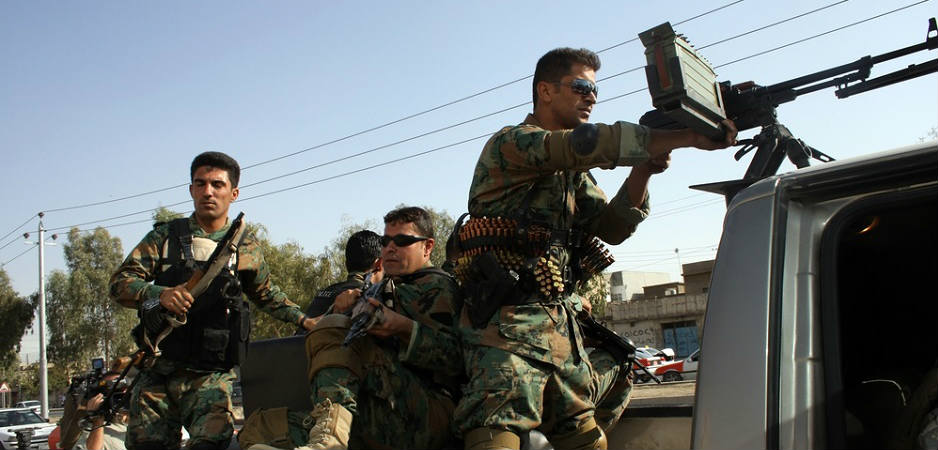
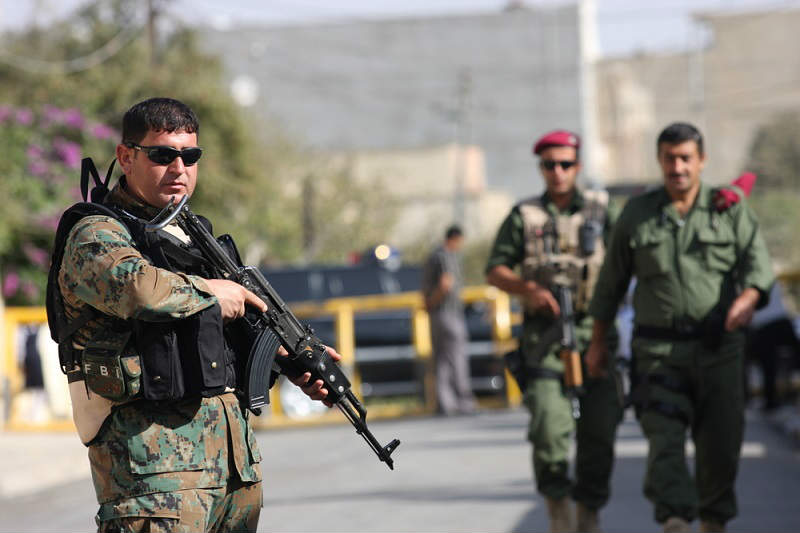

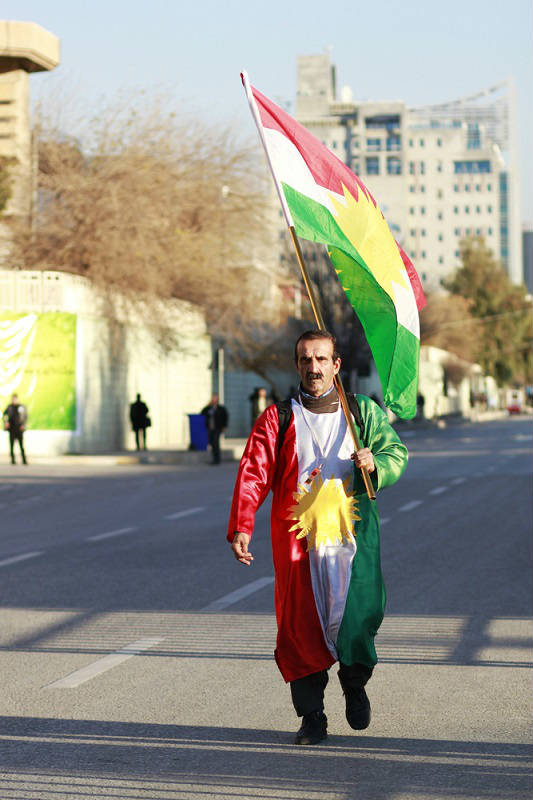



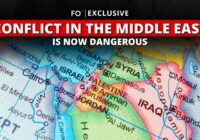
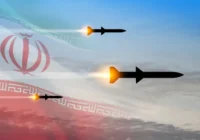
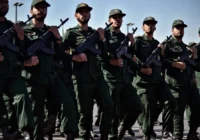

Comment